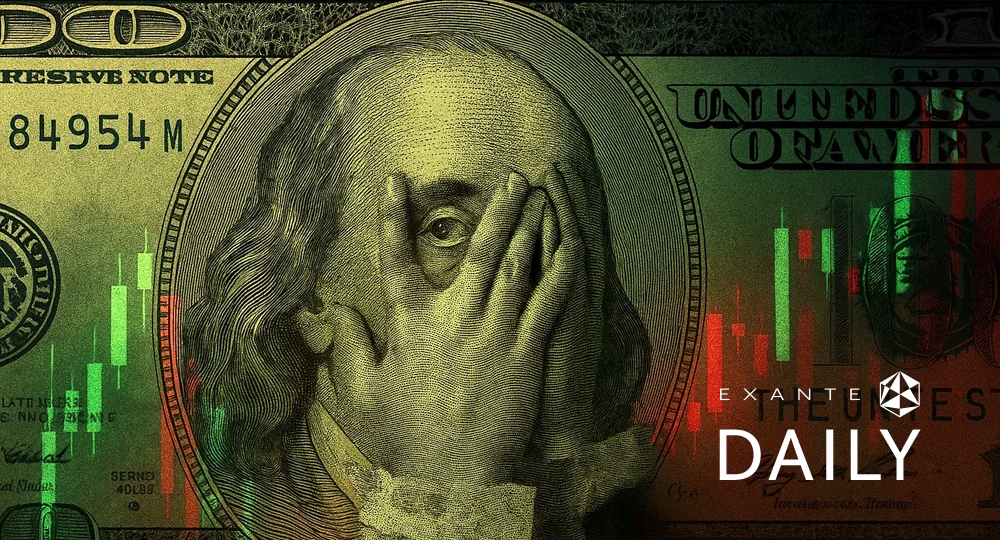
EXANTE Quarterly Macro insights Q2 2023

Q2 review
The second quarter of 2023 was positive for equities but bond prices fell as global central banks continued to raise rates or promised to keep doing so. Following on from the US debt ceiling crisis early in the quarter, global shares gained in the quarter enthusiasm over AI (Artificial Intelligence) leading the way for technology stocks. The S&P 500 is up over 20% since its October lows, breaching the technical indicator of a bull market. Headline inflation was down on lower energy prices, but core inflation remained stickier as second round effects continue to be felt across the US, UK and Eurozone. Technology, consumer cyclicals, and communication stocks lead the list of the best performing US sectors during the second quarter of 2023 with enthusiastic investors piling into mega cap AI affiliated tech stocks like Apple, Meta Platforms, and Nvidia that may stand to benefit from the future implementation of AI. But with only seven stocks accounting for approximately three-quarters of this year’s gains in the US, investors may begin to worry about the sustainability of the rally into Q3 as these stocks may run out of steam as, according to Morningstar Equity Research, they have moved into overvalued territory. As noted by Morningstar, this is the first time since the beginning of 2022 that the sector has traded above its fair value. In the US, Utilities, Energy, and Consumer Staples were the worst performers in Q2.
US indices for Q2 2023
S&P 500 +6.99% QTD
Nasdaq 100 +15.17% QTD
Dow Jones Industrial Average +2.55% QTD
The Nasdaq 100 had its best first half performance since its inception in 1985 and its best relative first half year performance versus the S&P 500 and the Dow Jones Industrial Average.
European Indices
Stoxx 600 +0.89% QTD
DAX +1.06% QTD
CAC 40 +3.32% QTD
IBEX 35 +3.90% QTD
FTSE MIB +4.12% QTD
FTSE 100 -1.31% QTD
Global Indices
Hang Seng -7.27% QTD
MSCI global +4.51% QTD
Fixed Income
US Treasuries 10-year yield to 3.81%.
Germany’s 10-year yield to 2.39%.
Britain’s 10-year yield to 4.39%.
Government bond yields were on the rise again in Q2 with changing expectations for Fed policy sending rate-sensitive bonds slightly lower. The US 10-year yield rose from 3.47% to 3.81%, with the two-year yield going from 4.03% to 4.87%, further inverting the curve.The UK 10-year yield surged from 3.49% to 4.39% and the two-year jumped even more, increasing from 3.44% to 5.26%.
According to JP Morgan Asset Management, the best performing bonds this year have been high yield credit and Italian government bonds, both returning about 5%, while the worst performing has been UK Gilts, -3.9%. Overall UK government bond performance was -6% in Q2. The UK’s poor performance may be due to ongoing inflation headwinds that is leading the market to pricing in interest rates at 6.5% by March and for rates to stay higher for longer. German bonds were -0.2% in Q2 due to ECB tightening and the economy slipping into a technical recession with manufacturing growth continuing to slow.
Commodities
Commodity stocks had a poor quarter, -2.6% and almost -8% for the year.
Industrial metals including copper, zinc, nickel, and aluminium were all sharply lower in the quarter.
Oil declined in Q2 due to ongoing uncertainty about global economic conditions limiting expectations for global oil demand growth. Despite the recent weakness in oil prices, global oil inventories will decline in each quarter from the third quarter of 2023 (3Q23) through 3Q24 according to US Energy Information Agency forecasts.
Gold declined about 3.4% in Q2 to about $1,913 an ounce as the Fed continued to raise rates through most of Q2.
The US
US equities ended the quarter higher, with most of the gains made in June. There were signs of moderating inflation and the economy appears resilient with households estimated to still have around $500 billion in excess savings built up during the pandemic and a tight labour market; 46.8% of consumers surveyed said jobs were “plentiful,” up from 43.3% in May, according to Conference Board data. The Fed continued to raise rates in Q2 before coming to a dramatic pause in June. However, it indicated that markets should expect at least two further rate rises this year and that rate cuts are off the table for this year and well into 2024 at least. The funds rate finished Q2 at a range of 5.00%-5.25%. Headline inflation appears to be slowing, largely due to favourable base effects from declining oil prices, falling to 4% in May from April’s 4.9% and the lowest since March 2021. Core inflation eased to a 1-1/2-year low of 5.3% in May 2023 from April’s 5.5%. Labour markets delivered mixed signals with unemployment rising to 3.7%, although the US economy unexpectedly added 339K jobs in May 2023. This followed an upward revision in March and April. Average hourly earnings rose by 4.3% in May, after a 4.4% increase in April, indicating that wage pressures are gradually decelerating but still not consistent with inflation falling sustainably to the 2% target. Q1 GDP was revised notably higher to 2% from 1.3%, reflecting upward revisions to exports and consumer spending. Consumer confidence increased in June to 109.7 (1985=100), up from 102.5 in May. its highest level since the start of 2022.
Technology stocks have managed to outperform so far this year. According to the Nasdaq market intelligence desk, 7 of the 11 S&P 500 sectors finished higher in the first half of 2023, led by Technology (+42.8%), Communications (+36.3%), and Consumer Discretionary (+33%).
In Q2 energy stocks were -0.9% as concerns about global growth and weak recovery in China seemed to outweigh potential supply cuts with OPEC+ promising to reduce supplies from 1 July and US inventories declining at a faster than expected rate. Exxon Mobil, Chevron Corporation, Marathon Petroleum, Occidental Petroleum, and Phillips 66, all down for the quarter.
The Eurozone
Eurozone equities posted gains in Q2 led by the financials and IT sectors, while energy and communication services underperformed. Equity gains were supported by hopes that inflation may have peaked as gas prices continued to fall. MSCI Europe ex -UK equities were up 3% in Q2 and are up about 14% YTD. The ECB raised interest rates twice in the quarter, taking the deposit rate to a 22-year high at 3.5% with promises to continue raising rates given growing fears of a wage inflation spiral. Headline CPI declined with annual inflation estimated at 5.5% in June, down from 6.1% in May as energy prices fell. However, the core inflation rate was up to 5.4% in June from 5.3% in May. The Eurozone experienced a mild recession with GDP declines of -0.1% in both Q4 2022 and Q1 2023. The HCOB Eurozone Manufacturing PMI was revised downwards to 43.4 in June 2023 from the preliminary estimate of 43.6, indicating the sharpest deterioration in the sector's health since May 2020. The flash eurozone composite PMI fell to 50.3 in June from 52.8 in May. Despite the slowdown in inflation, the ECB raised its headline and core expectations for 2023 and 2024 to 5.4% this year, at 3% in 2024 and at 2.2% in 2025.
The UK
The UK economy continued to face a number of headwinds in Q2 with core inflation jumping up to 7.1% in May as the country faces labour shortages and a wage inflation spiral with wage growth at 7.2% in the February to April 2023 period. The UK economy remains 0.5% smaller than before the Covid pandemic with GDP in Q1 confirmed at only 0.1% on a quarter on quarter basis. The S&P Global/CIPS services Purchasing Managers' Index (PMI) dropped to 53.7 in June from May's 55.2, the lowest reading since March and the biggest month-on-month fall since August 2022. The composite PMI, which includes manufacturing PMI data, also fell to a three-month low at 52.8. Consumer confidence is improving, with data from Gfk showing it rose to -24 in June 2023, up by three points from -27 in May. Headline inflation was 8.7% in May, the same as in April. Core CPI (excluding energy, food, alcohol and tobacco) rose by 7.1% in the 12 months to May 2023, up from 6.8% in April, and the highest rate since March 1992. The Bank of England increased policy rates by 25 basis points in May before shocking markets with a 50 basis point rise in June with BoE Governor Andrew Bailey saying that the Bank would do “whatever it takes” to curb rising prices. With wages continuing to rise, UK equities underperformed global equities, in part due to Sterling strength, but still gave just over 3% growth. Energy and basic materials underperformed due to the broad-based weakness in commodity prices as concerns over the outlook for the Chinese economy weighed on sentiment. Industrials outperformed as did the consumer discretionary sector.
Asia ex-Japan
In Asia ex-Japan, Chinese equities were sharply lower in the second quarter as the much anticipated economic rebound didn’t appear. China’s official manufacturing PMI, although rising to 49 in June from 48.8 in May, was the third straight month of contraction in factory activity. China’s services sector activity expanded more slowly than expected in June, with the Caixin’s services PMI coming in at 53.9, down from 57.1 for May. It was the slowest growth in 5 months. Weaker domestic demand and falling demand for exports following interest rate rises in the US and Europe have led the People’s Bank of China to cut some lending rates and the Chinese government to state at the World Economic Forum meeting in Tianjin in June that it will take steps to boost demand, while accelerating the green transition and opening "high level" parts of its economy to the outside world. As a result, in Q2 the MSCI Asia ex-Japan index was -1.1% according to JPMorgan Asset Management, with China, Malaysia, and Thailand the worst-performing index markets, while share prices in India, South Korea and Taiwan, especially in their tech stocks, gained due to investor AI optimism.
Emerging markets
Emerging market (EM) equities were slightly up over the quarter, with the MSCI EM index +1%. According to data from Schroders, the best-performing markets were Hungary, Poland and Greece despite rising recessionary fears in Europe. Central European banks have been the first to react to falling inflation with Hungary cutting rates in June. Greece’s outperformance was largely due to the New Democracy party, which won its second term in May, promising to make the economy its focus point. Greek 10-year bond yields have fallen below that of Italy’s. Other top performers included Brazil on easing fiscal policy concerns while Mexico, Colombia, and Peru were also up.
Currencies
The US dollar was weaker against most of its peers due to changes in rate hike expectations. The ECB’s determination to battle inflation with its series of rate rises helped the EUR, but concerns about recession in Germany, its biggest economy, and the ongoing war in Ukraine contributing to geopolitical risk, have muted any gains. It rose 0.66% in Q2 against the US dollar.
A stronger-than-expected economy, expectations of rising rates, and falling energy prices has helped the pound. However, fears that BoE rate hikes will lead the economy into recession have dampened Sterlings rise in Q2. The GBP was up 3.01% against the USD in Q2.
Cryptocurrencies
Bitcoin +7.27% QTD
Ethereum +6.24% QTD
Note: As of 5:30 pm EDT 30 June 2023
Despite cryptocurrency investors being spooked by SEC lawsuits against crypto exchanges Coinbase Global and Binance, hitting altcoins the hardest, Bitcoin continued to rise through Q2 as established institutional investors such as BlackRock applied to the SEC to establish a Bitcoin ETF. Cryptocurrencies were also buoyed by the passing of a regulatory framework, MiCA, in Europe, as it provides clarity on investor and consumer protections, and it gives a comprehensive framework for issuers and service providers.
What to think about in Q3 2023
There are a number of continuing and new risks to investors in Q3 2023 with the Federal Reserve, ECB and Bank of England still warning of interest rate increases to come. It is unclear whether the coast is really clear for a wider equity market rally or if bonds will underperform. It all, it seems, depends on what happens with inflation. If inflation continues to decline at pace due to falling energy prices, then the likelihood of a softer landing for the US and even Europe will rise. The UK on the other hand, will likely remain constrained due to labour shortages.
US inflation is expected to fall further in Q3 but a still resilient labour market that has structurally changed post Covid may allow for continued wage growth, particularly in services, which may help to keep core inflation well above the Fed’s target through much of Q3. The much anticipated recession, indicated by continuing inversion of the Treasury yield curve, will continue to weigh on sentiment, although it is likely to be short lived. Bonds will certainly rally if yields fall in line with falling inflation. For the bull market rally to continue, inflation will need to come down further so that mid and small cap firms can also grow.
Economic and Geopolitical Risk Calendar:
The potential policy and geopolitical risks for investors that could negatively affect corporate earnings, stock market performance, currency valuations, sovereign and corporate bond markets and cryptocurrencies include:
July 2023
5-6 July 2023. OPEC 8th International Seminar, Hofburg Imperial Palace in Vienna, Austria. Ministers from OPEC Member Countries and other oil-producing and oil-consuming nations, as well as industry leaders, academics, analysts, energy experts and journalists from specialised media are expected to attend. It is likely to be focused on discussions on energy security, energy sustainability, and supply.
11-12 July 2023 NATO Summit. The NATO Heads of State and Government meeting will take place in Vilnius, Lithuania. The summit will define the security challenges facing the Alliance in light of the various campaigns in Ukraine and the June short term threat to Russian President Vladimir Putin’s leadership, and scenarios related to the Wagner group’s movements into Belarus. Expect to hear news on Ukraine’s application and Turkey’s thoughts on Sweden’s application.
14-18 July 2023 G20 Meeting of Finance Ministers and Central Bank Governors. The meeting will take place in Gandhinagar, Gujarat, India.
23 July 2023 Spanish second round legislative election. Elections are being held after Prime Minister Pedro Sanchez on 29 May signed a decree to dissolve parliament and trigger snap elections. The legislative elections outcome remains uncertain, with no party likely to obtain a majority on its own, although right-wing parties are likely to perform well.
25-26 July 2023 US Federal Reserve Monetary Policy meeting. Although minutes from the Fed’s 13-14 June meeting showed that the majority of FOMC members deemed it “appropriate or acceptable” to keep rates unchanged, some would have supported a quarter-point increase instead, indicating that some officials see the inflation problem as being more entrenched. The Fed has announced that another 50 basis points of rate rises this year is likely with the market now largely expecting a resumption in hikes in July by another 25 basis points. Policymakers will be looking closely at the June employment report due this Friday and CPI data on 12 July to see whether the impact of previous rate rises is being felt.
27 July 2023 ECB meeting and monetary policy decision. The ECB is expected to raise rates again at the July meeting by 25 basis points. However, eurozone consumers’ inflation expectations have fallen to the lowest since 2016. Nevertheless inflation does not appear to be falling uniformly across the Eurozone, with German headline inflation rising 6.8% on the year in June as prices increased by 0.4%, above market expectations of 0.3% and Spanish headline inflation falling to 1.6% in June from a year earlier, down from 2.9% the previous month. The ECB is likely to focus on what is happening with core inflation with wages, particularly in the service sector, continuing to provide inflationary pressure.
August 2023
3 August Bank of England Monetary Policy Summary, minutes and Monetary Policy Report. Given that the UK’s labour market is expected to remain tight, with wages continuing to be the biggest driver of inflation, the BoE will likely continue to raise rates until it sees core inflation falling sufficiently and sustainably to justify a stop, even as mortgage rates rise and concerns about economic growth may hit Sterling and equity markets.
22-24 August 2023 15th BRICS leaders’ summit. South Africa will host the summit in Cape Town under the theme “BRICS and Africa: Partnership for Mutually Accelerated Growth, Sustainable Development and Inclusive Multilateralism”.
24-25 August 2023 G20 trade and investment ministers’ meeting. G20 trade and investment ministers will meet in Jaipur (India).
September 2023
4-7 Sep 2023 43rd ASEAN Leaders’ Summit. The participants will discuss economic, political, security and sociocultural developments in Southeast Asian countries in Jakarta (Indonesia).
9-10 September 2023 G20 Summit. This year’s summit theme, “One Earth, One Family, One Future,” will see climate action take high priority. India is likely to continue to push for better Global South representation in multilateral institutions. The African Union may also be made a permanent G20 member at the summit, after receiving support from United States’ President Joe Biden.
12-30 September 2023 Opening of the 78th UN General Assembly. The Russia-Ukraine conflict will likely remain top of the agenda at the annual meeting.
14 September ECB meeting and monetary policy decision. The ECB is expected to continue to raise rates as ECB President Christine Lagarde has said “there is still much more ground to cover.” However, much will depend on whether previous increases have filtered through enough to the economy, and if slowing growth, especially in the largest Eurozone economy, Germany, increases reluctance among policymakers to continue tightening.
19-20 September US Federal Reserve Monetary Policy meeting. The Fed will remain data dependent, but with headline inflation likely to continue falling, the Fed will be focused on the core PCE. It may also consider housing market pressures but given that labour markets remain tight, consumer demand is likely to stay relatively strong.
19-20 September 2023 Sustainable Development Goals Summit. Marking the mid-point of the implementation of the 2030 Agenda for Sustainable Development, the SDG Summit will review the implementation of the 2030 Agenda for Sustainable Development and progress on the Sustainable Development Goals.
21 September Bank of England Monetary Policy Summary and minutes. BoE officials are expected to continue raising rates through the end of Q3 as core inflation will likely remain in uncomfortable territory for policymakers.
28 September 2023 IEA Critical Minerals and Clean Energy Summit. The high-level international meeting will bring together ministers from mineral producing and consuming economies as well as industry, investors and civil society to address supply and sustainability questions.
DISCLAIMER: While every effort has been made to verify the accuracy of this information, EXT Ltd. (hereafter known as “EXANTE”) cannot accept any responsibility or liability for reliance by any person on this publication or any of the information, opinions, or conclusions contained in this publication. The findings and views expressed in this publication do not necessarily reflect the views of EXANTE. Any action taken upon the information contained in this publication is strictly at your own risk. EXANTE will not be liable for any loss or damage in connection with this publication.
本文提供给您仅供信息参考之用,不应被视为认购或销售此处提及任何投资或相关服务的优惠招揽或游说。金融工具交易存在重大亏损风险,未必适合所有投资者。过往表现并非未来业绩的可靠指标。




